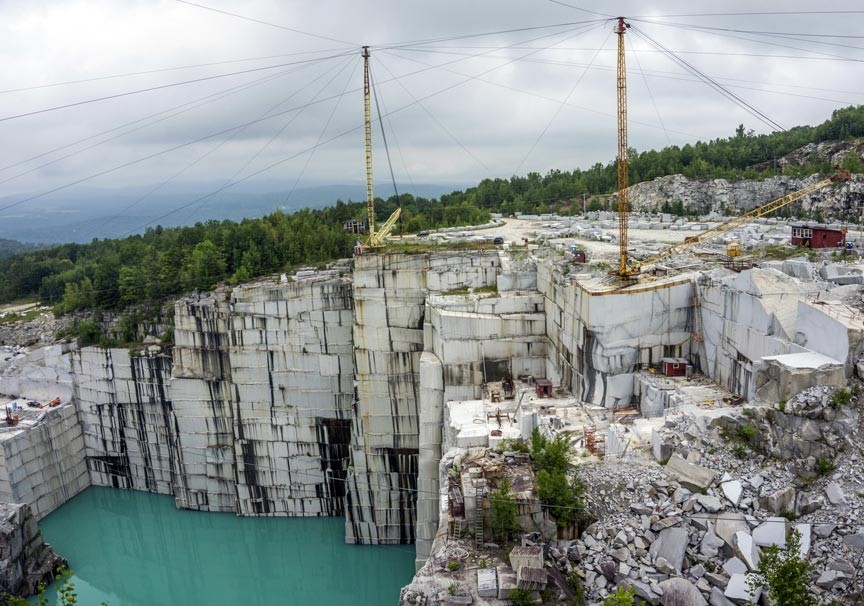Discovering Granite Quarries in South Africa: A Comprehensive Guide
Discovering Granite Quarries in South Africa: A Comprehensive Guide
Blog Article
Unveiling the Mysteries of Granite Quarrying: Where Stamina and Sophistication Meet
The globe of granite quarrying is a realm where the raw toughness of nature converges with human artistry to produce frameworks that stand the examination of time with an air of elegance. From the depths of quarries to the careful sprucing up in workshops, the procedure of transforming granite into architectural wonders is an intricate dancing of tradition and development. As we peer into the midsts of this old craft, we start to reveal the surprise intricacies that shape the very significance of our developed setting.
The Beginnings of Granite Quarrying
In the record of building background, the beginnings of granite quarrying are shrouded in a tapestry of old workmanship and geological wonders. Going back to old Egypt and Mesopotamia, the extraction of granite from quarries marked the beginning of a journey that would eventually result in the development of a few of the world's most renowned structures.
Granite quarrying's roots can be traced to the competent craftsmens that acknowledged the stone's toughness and visual charm. With a combination of primitive tools and large resolution, these very early quarry workers discovered granite blocks that would end up being the building blocks of civilizations.
As civilizations evolved, so did the strategies of quarrying granite. The Romans, renowned for their design expertise, established advanced approaches for removing granite to build monoliths, holy places, and roads that stood the test of time.
The heritage of these old quarrying practices remains to form contemporary architecture, with granite continuing to be an icon of stamina and elegance in building projects around the world. (granite quarries in south africa)
Devices of the Quarrying Profession
The development of granite quarrying methods from old civilizations to modern times highlights the crucial duty played by the tools of the quarrying trade in forming the market's practices. In old times, quarrying tools were basic, often containing chisels, hammers, and wedges made from products like bronze or iron. These tools called for considerable manpower and time to essence granite blocks from quarries.

Furthermore, the introduction of pneumatic tools and high-powered machinery has significantly decreased the physical labor required in quarrying operations, enhancing employee safety and security and performance. As the quarrying sector remains to innovate, the tools of the trade remain at the forefront of driving progression and forming the future of granite removal.
Drawing Out Blocks of Granite
Utilizing precision equipment and progressed methods, the extraction of granite obstructs from quarries has actually ended up being an advanced process in the modern-day quarrying market. The preliminary step entails recognizing the place and size of the granite down payment to establish the most efficient removal technique. Once an ideal site is selected, the removal process starts with the exploration of holes for the placement of nitroglycerins. Managed blasting strategies are then used to damage apart the granite into convenient sections.

Sprucing Up and Completing Techniques
To attain a perfect surface on granite blocks, skilled craftsmens official site employ a collection of careful polishing and ending up methods. After the initial removal and shaping procedures, the granite blocks undertake a complete polishing stage to enhance their all-natural beauty and durability. One typical method utilized in polishing granite is diamond abrasion, where commercial diamonds are made use of to grind and polish the rock to a smooth finish. This process not just creates a glossy surface area but also makes sure uniformity in shade and texture across the granite block.
Along with polishing, ending up techniques are put on additional improve the granite's appearance. These methods may consist of flaming, sharpening, or cleaning, each offering special appearances and coatings to match various aesthetic preferences. Flaming, for example, entails exposing the granite surface area to high temperature levels to produce a rough, distinctive surface, ideal for exterior applications where slip-resistance is crucial. Developing, on the various other hand, supplies a matte finish Your Domain Name that is smooth to the touch, excellent for interior countertops and floor covering. By carefully picking and using these brightening and completing strategies, craftsmens can change raw granite obstructs right into charming pieces that display both toughness and sophistication.

Ecological Impact and Sustainability
With the growing emphasis on environmental consciousness in the market, granite quarrying techniques are increasingly scrutinized for their effect on all-natural sources and long-term sustainability. Quarrying for granite can have significant ecological effects. The removal procedure frequently includes the use of hefty equipment, nitroglycerins, and large amounts of water, bring about habitat damage, dirt erosion, and water contamination. In addition, the transport of granite from quarries to processing facilities produces carbon emissions, additionally adding to ecological destruction. granite quarries in south africa.
To alleviate these influences and guarantee sustainability in granite quarrying, industry stakeholders are taking on numerous procedures. Carrying out innovative innovations to lower energy consumption and water usage, reclaiming quarried land for ecological restoration, and promoting responsible sourcing practices are some strategies being employed. Furthermore, qualifications such as the Woodland Stewardship Council (FSC) and the Management in Power and Environmental Style (LEED) assistance consumers identify environmentally pleasant granite items.
Conclusion
In verdict, granite quarrying is a process that calls for specialized devices and techniques to remove blocks of granite and polish them to a high degree of surface. While the environmental effect of quarrying can be significant, Full Report initiatives are being made to improve sustainability techniques in the market. Overall, granite quarrying is a fragile balance in between utilizing the toughness and beauty of this all-natural stone while decreasing its effect on the setting.
Report this page